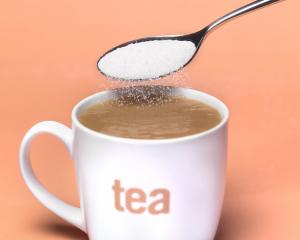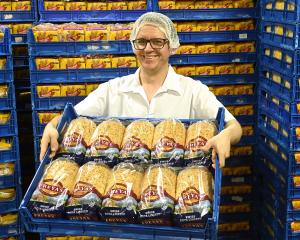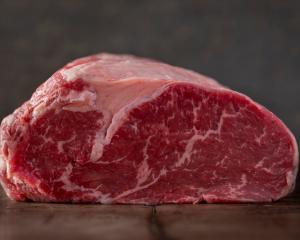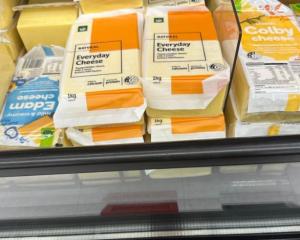

For centuries people have been preserving food by salting, drying, fermenting and heating.
In 1800, Napoleon offered a prize for a new method to preserve food and produce rations. In 1806, French confectioner Nicholas Appert claimed the prize, developing the process of packing meat into jars, sealing it and heating it in boiling water. In 1810, British inventor Peter Durand patented his own method using tin cans, a process still in use today.
People didn't understand the scientific reasons behind preserving methods until Louis Pasteur discovered in the mid-19th century that bacteria caused spoilage and could be inactivated by heat, Prof Bremer said.
Pasteurisation of milk was introduced about 1900 not only to slow spoilage but also to reduce the incidence of numerous milk-borne diseases.
A lot of food is still subjected to retorting - high heat to prevent it spoiling - but heat changes the taste. Juices that have been pasteurised or retorted to make them shelf stable lose some of their delicate flavours and have more of a cooked note, he said.
''To meet consumer demands for more natural-like products, a number of technologies are used. High hydrostatic pressure processing (HPP) is one of these,'' he said.

HPP is appropriate for food products that are naturally acidic and sold chilled, such as juices. In New Zealand some vegetable juices are processed this way and are labelled ''cold pasteurised''.
HPP can also be used to safeguard against disease-causing bacteria in packaged deli meats, and can be used to shuck some types of shellfish and help extract meat from crabs or lobsters.
A classic use is to inactivate the enzymes that turn guacamole brown, thus extending the shelf life from three to four days to a couple of weeks.
However, because it is a batch system and expensive, it is appropriate for high value products, he said.
Another new technique is pulse electric field processing (PEF), where a food is subjected to an intense electric field for a few microseconds. It causes small holes to be formed in cell membranes.
Although it can be used at high intensity to pasteurise foods, heat is usually required, so it is more commonly used to punch holes in the membranes of plant materials to enhance the extraction of desirable compounds.
It can be used for things like extracting a natural dye from beetroot, or making potatoes easier to cut and to reduce energy use and wastage in the production of chips, to tenderise tough cuts of meat and, by some winemakers, to extract flavour from grapes and reduce maceration time.
However, there are challenges around using these technologies, Prof Bremer warns, and staff in the food science department have been working on several of them.
''A number of companies have tried making products by these processes but it's not always successful.
''You can't just buy a machine and expect it to work straight away. There are a lot of unknowns and challenges in determining the best formulations and machine operating conditions and there can be difficulties around getting regulatory approval if these new processes are being used to ensure the safety of the food,'' he said.
Ionising radiation is used in many countries to sterilise or pasteurise foods. Food is subjected to machine-generated electronic beams such as X-rays or gamma rays that damage the DNA of cells and destroy the organisms that cause spoilage or food-borne illness or kill unwanted insects such as fruit flies in imported food.
The free radicals produced by the radiation have a very short half life - in the order of milliseconds - and disappear almost as soon as they are made so there's no radioactivity left in the food, Prof Bremer said.
''If applied at low enough appropriate doses it doesn't impact on the flavour of most foods. If you apply too high a dose you can change the flavour and get a wet dog-type of odour.''
Irradiation can also prevent sprouting and germination so preventing food loss by stopping potatoes or grain from germinating and becoming unsuitable to eat. In low doses it is used to eliminate parasites and it can even be used to stop ripening of tomatoes or strawberries, thereby enabling them to be picked ripe, irradiated, then shipped without becoming over-ripe before they get to the consumer.
In the United States, some companies use it to eliminate E.coli from beef so Americans can cook their burgers rare in the middle, he said.
Irradiated products coming into New Zealand, such as mangoes from Australia, have to be labelled, and irradiation is only allowed here if there's a clear need and other ways to ensure their safety, such as fumigating with methyl bromide, are more harmful to the environment.
Microwave-assisted thermal sterilisation (MATS) is also being explored in New Zealand.
''This uses both traditional heating and microwave heating to bring the food up to temperature quickly, then it can be cooled quickly so some of the deleterious changes due to the slow heating that occurs during retorting doesn't happen.
''With this technique it's possible to make ready meals that have better particle definition and better flavour than ready meals sterilised the traditional way,'' he said.













